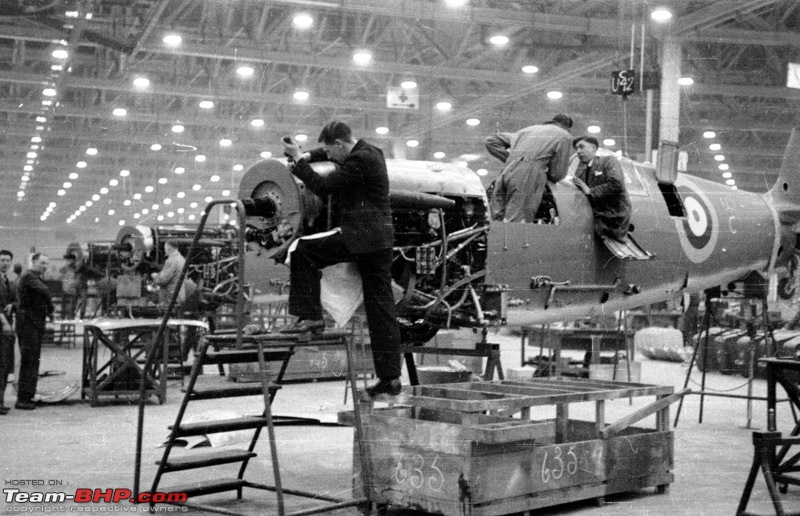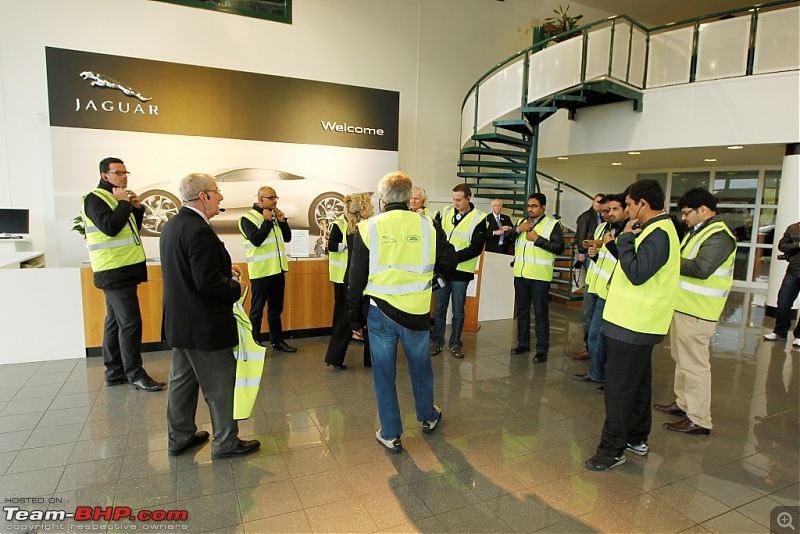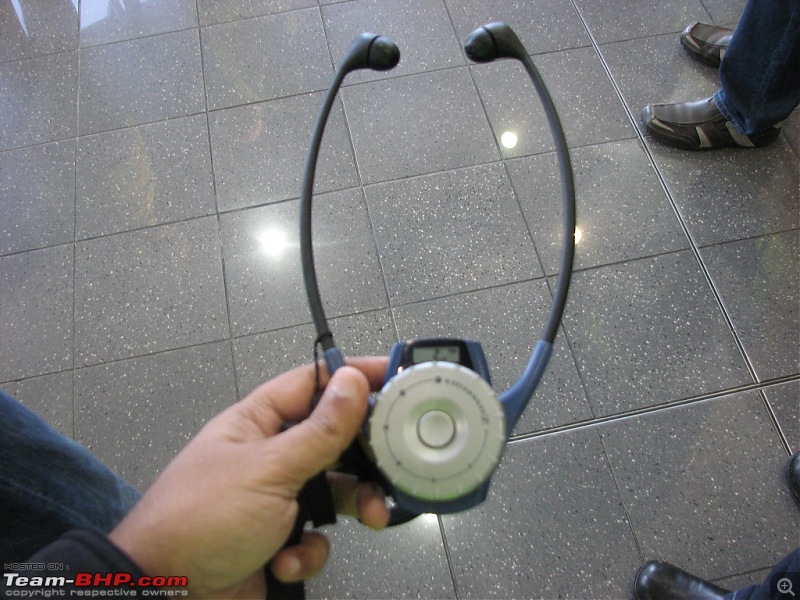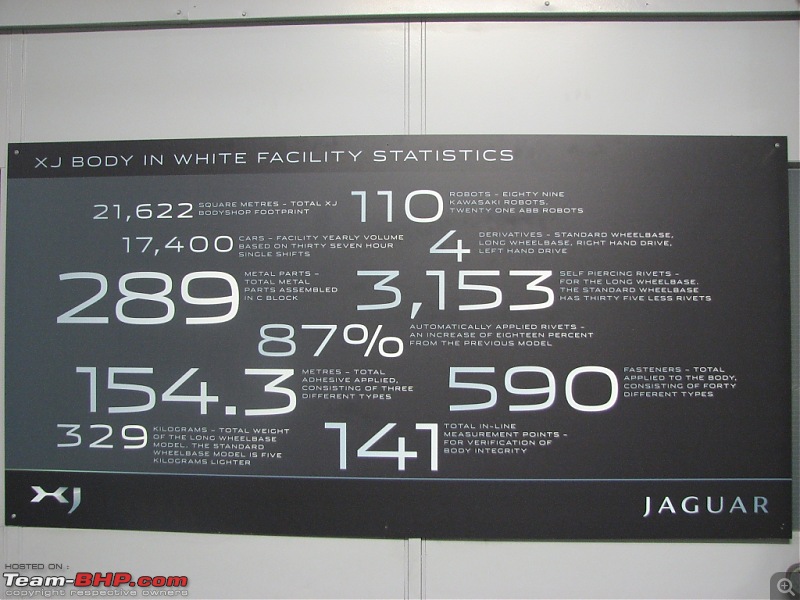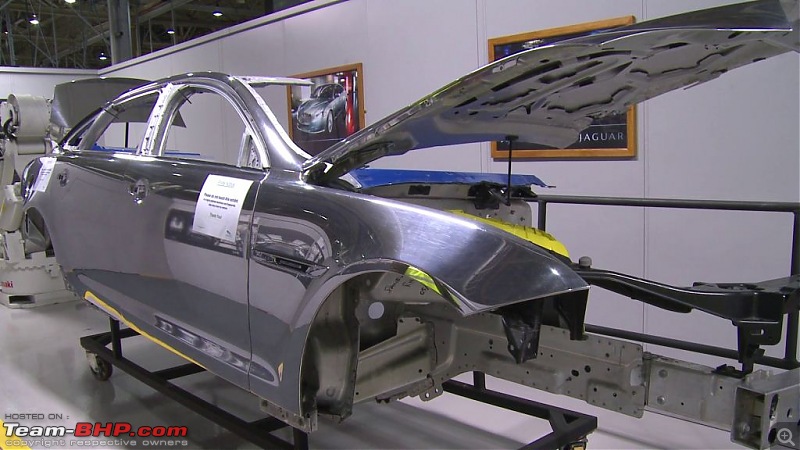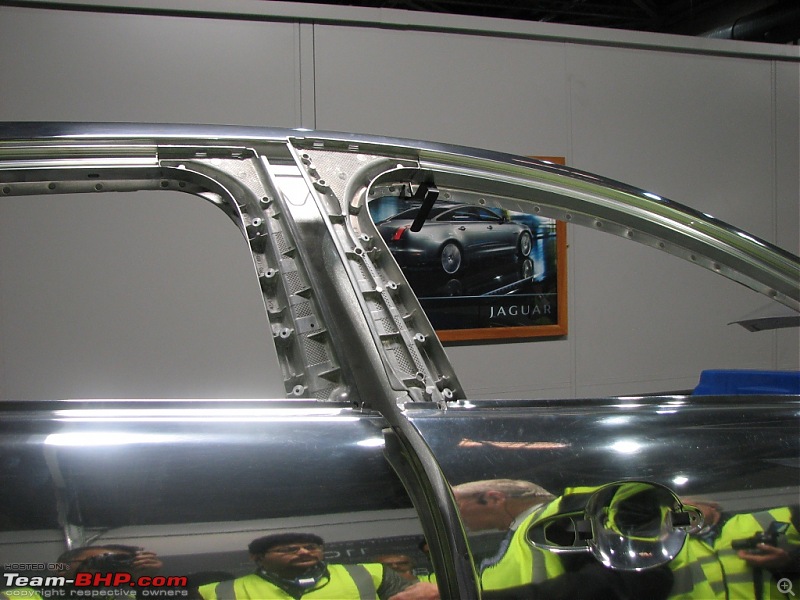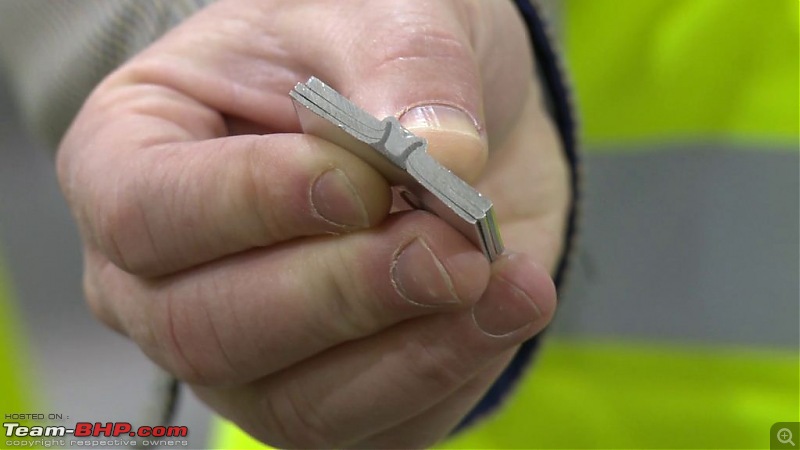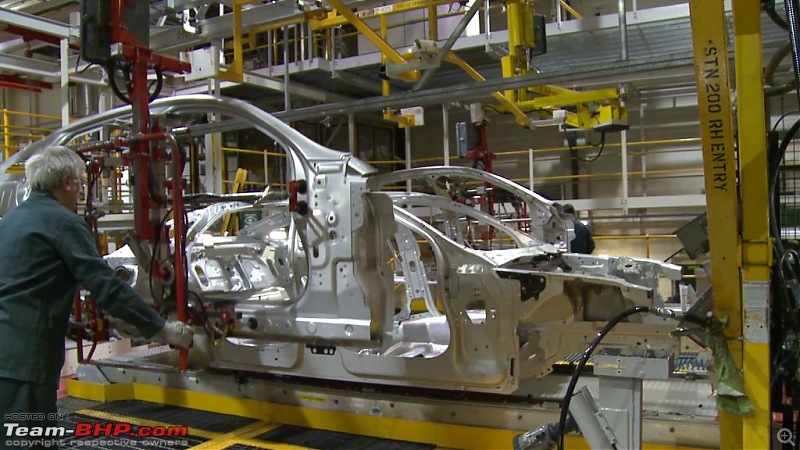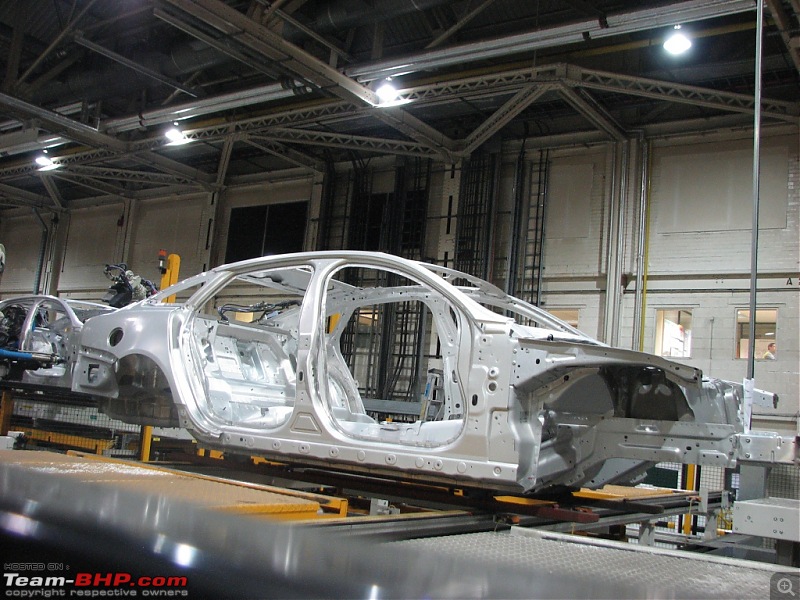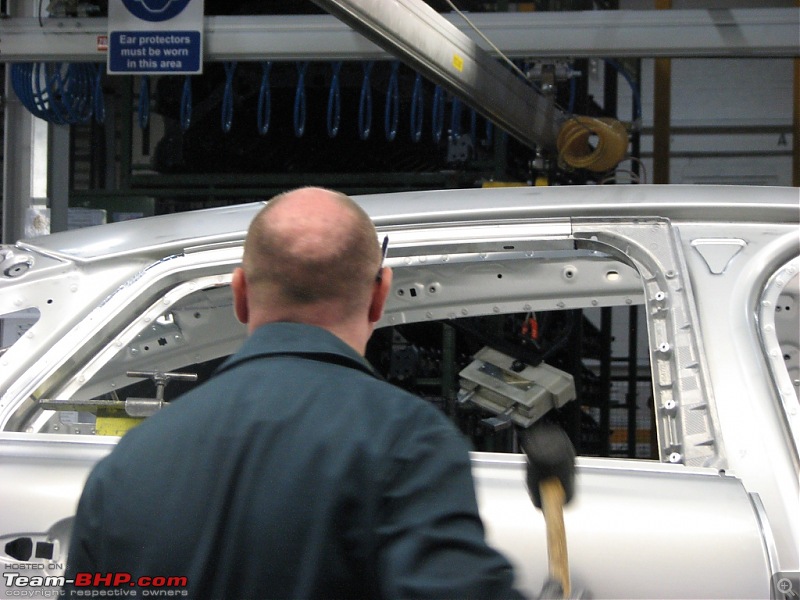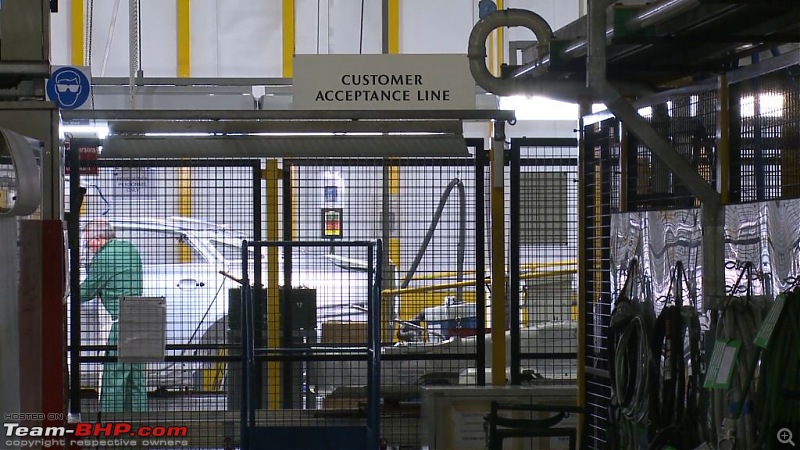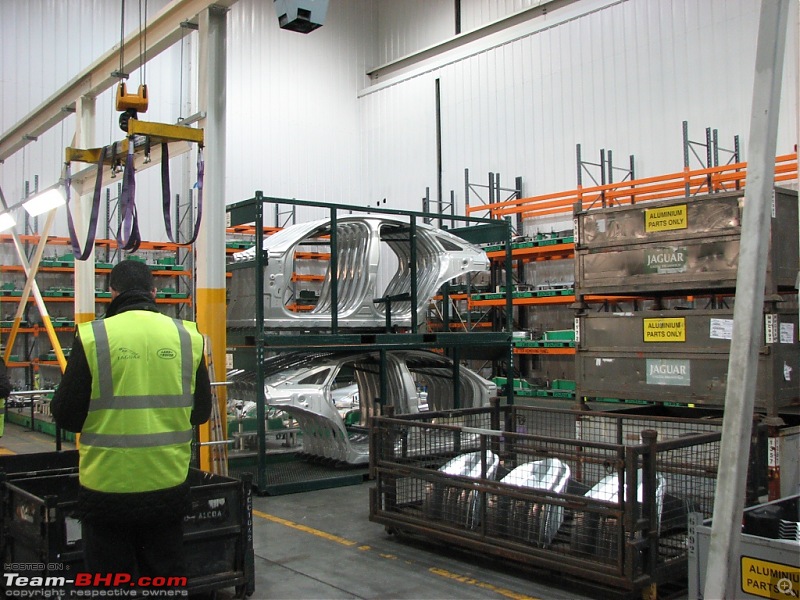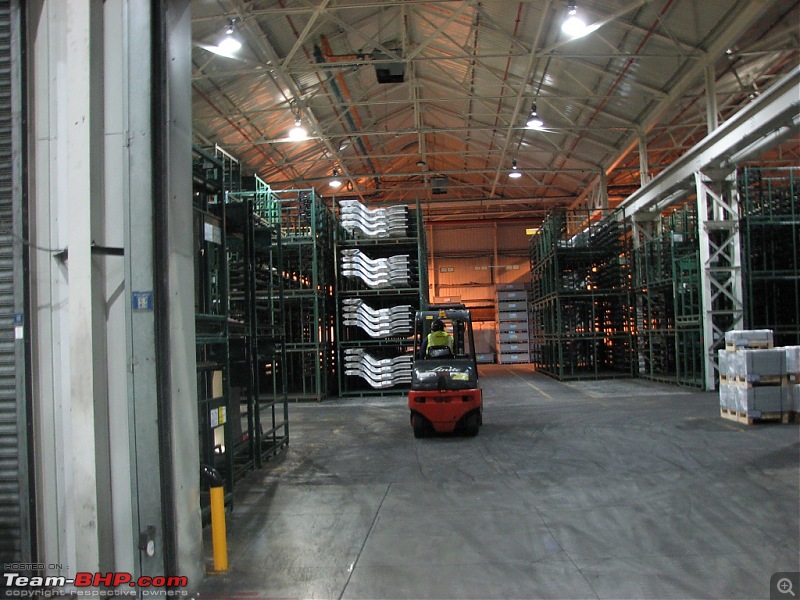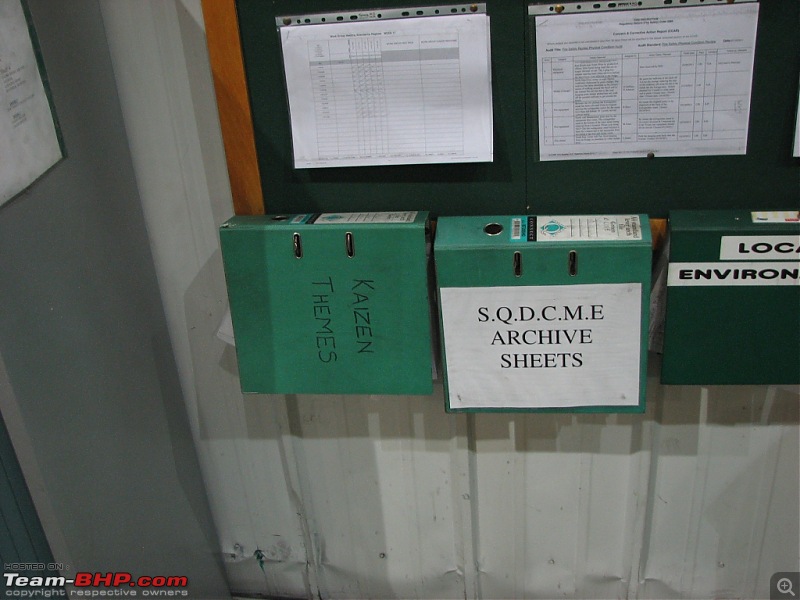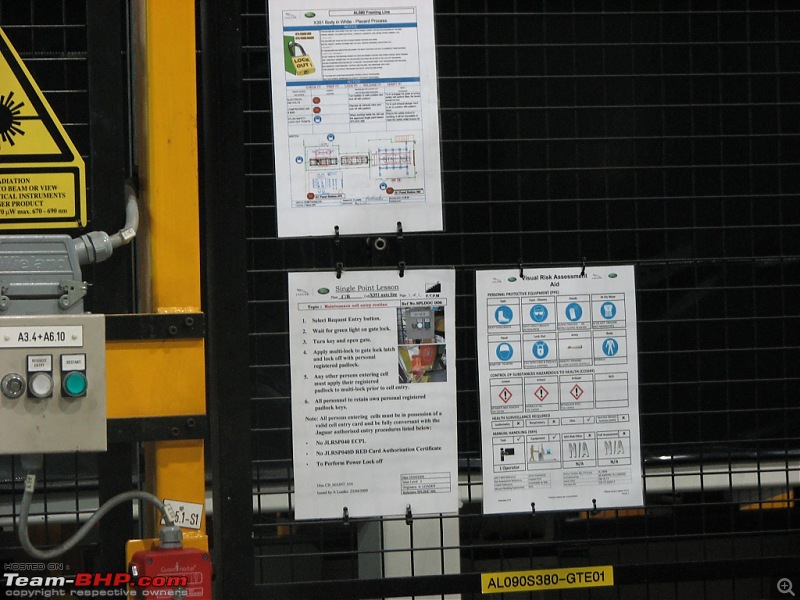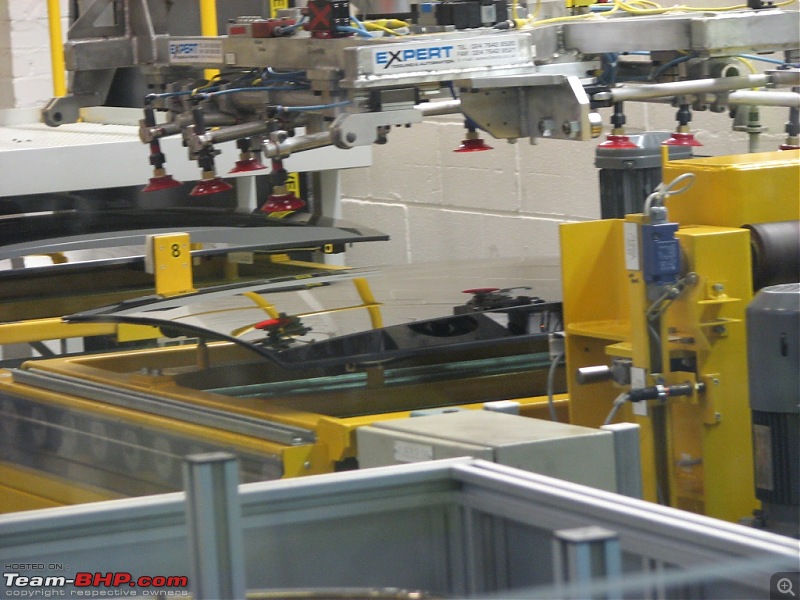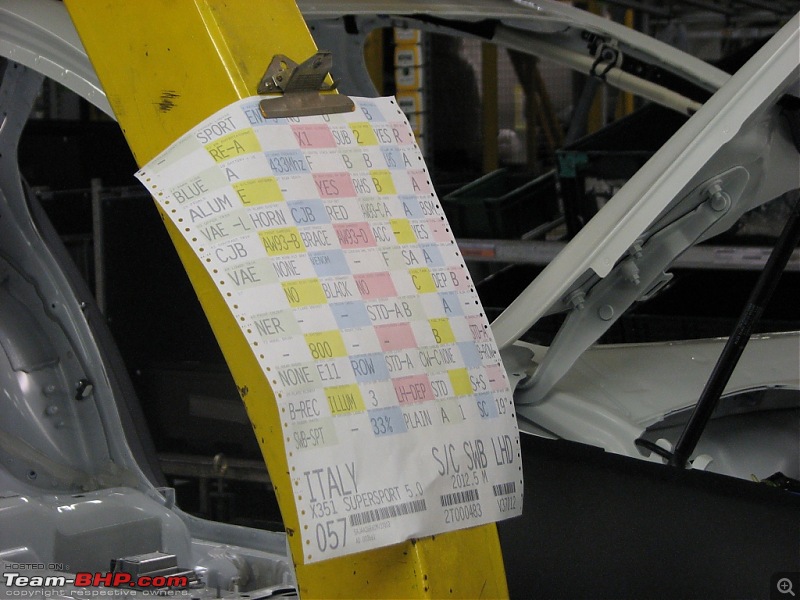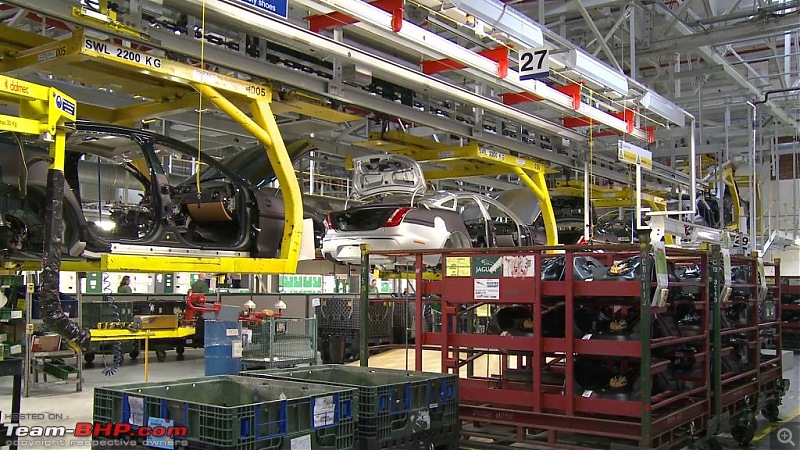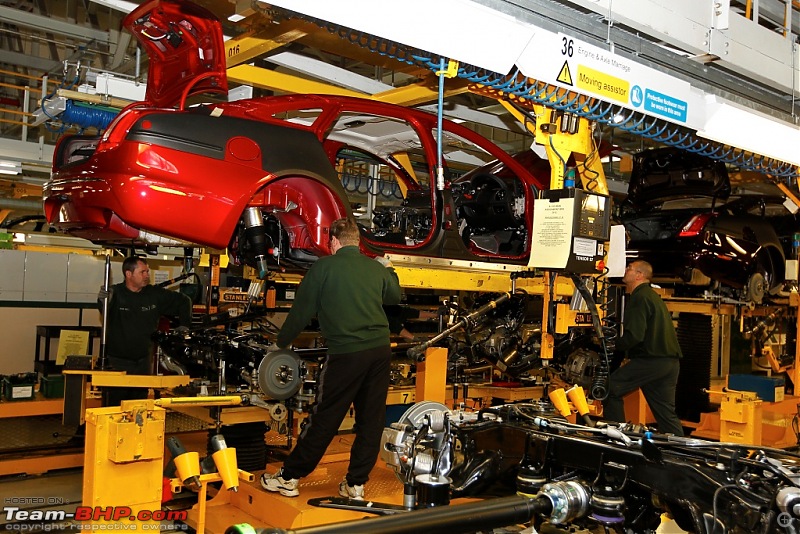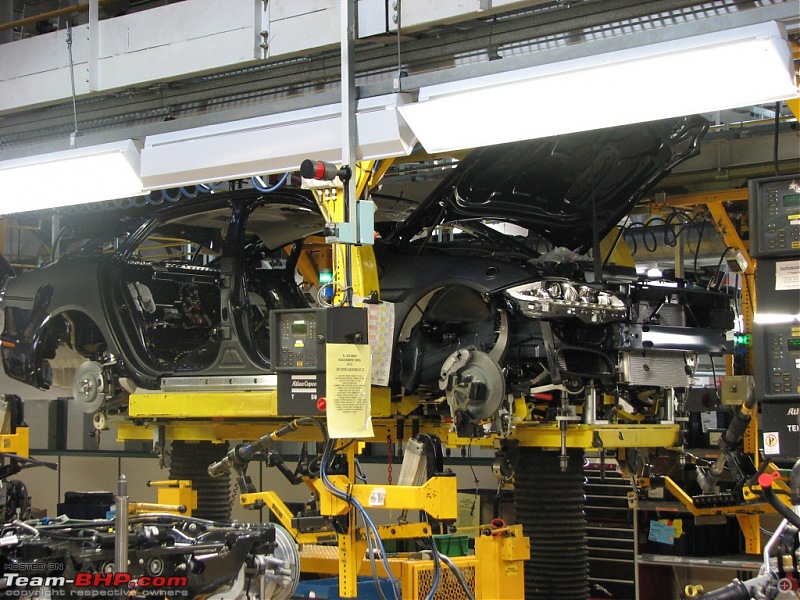The stamping operation is fast & the robots are kept really busy, moving their arms from left to right in clock-like precision. As the panels leave the final stamping station, they undergo quality checks by engineers who place them in specially designed bins. Almost all of the bins in the XJ line carry the
"Aluminium Only" tag. This is to ensure that no contamination with any other metal takes place. These bins are made of steel, but their inner side is coated with a special resin to prevent aluminium from coming in contact with the steel

The QA station for checking the stamped panels. We were told that the first panel, middle panel & last panel of each production run are taken as samples and thoroughly tested for tolerances:

The sample panels being setup on design spec panel rigs and carefully placed on a test bed. Notice the perforated floor area? These perforations are to accurately place the design spec rigs, which then proceed to laser beam tests for measurements. In the picture below, you can't see the laser equipment, but notice the 2 white / black stands at the end of the perforated floor. The laser machine is on top. You can see a hand in the top left corner of the picture pointing towards the laser:

The area is full of design spec panel rigs. They are neatly stored with the respective numbering and codes:
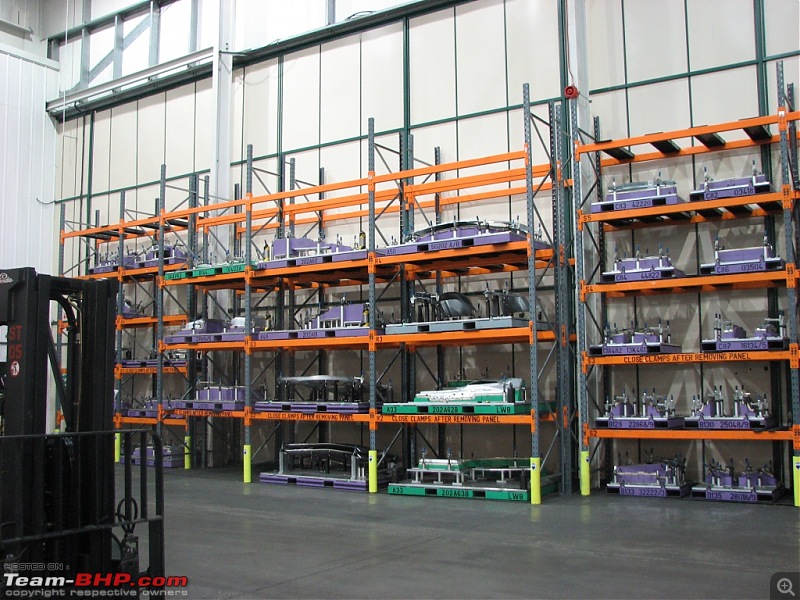
A die for the panel stamping. 45 minutes is what it takes to change a die in the stamping station:
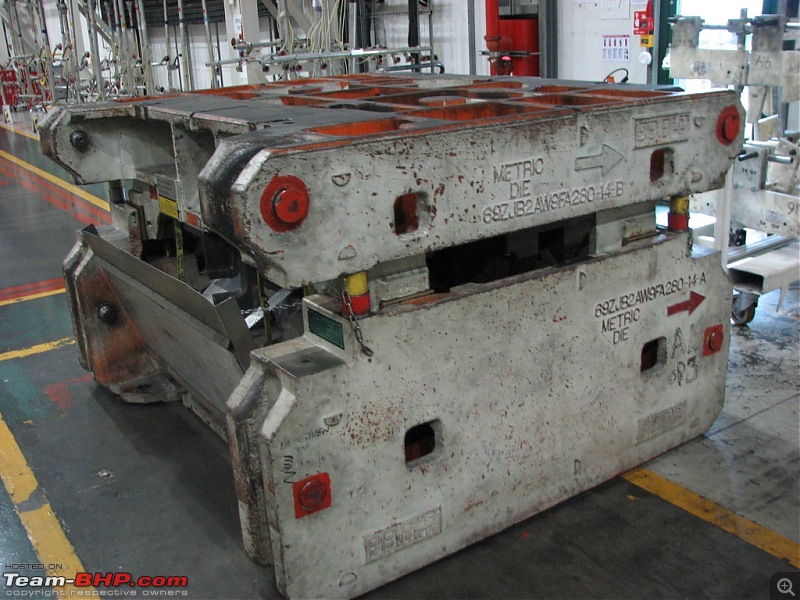
Here is a die being moved, via the overhead crane line, to its stamping station. Just rewind to pictures of the stamping station above...you'll notice rails in front. The die is moved in / out of the stamping stations using these guide rails:
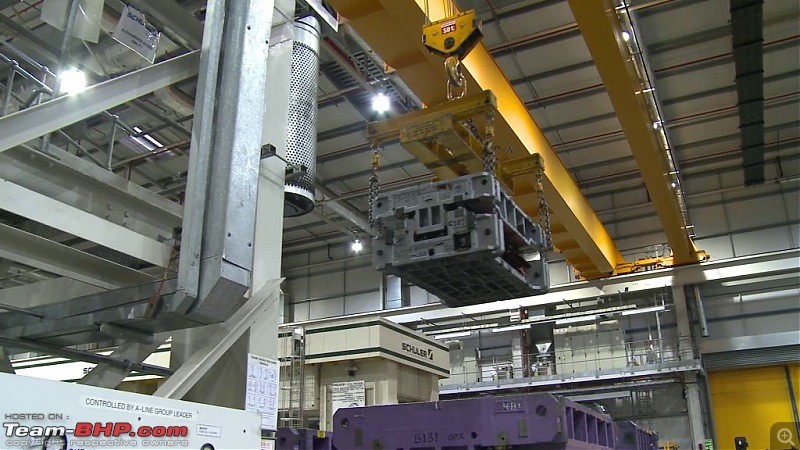
This part of the factory is just full of dies! They are seen everywhere, piled one on top of the other:
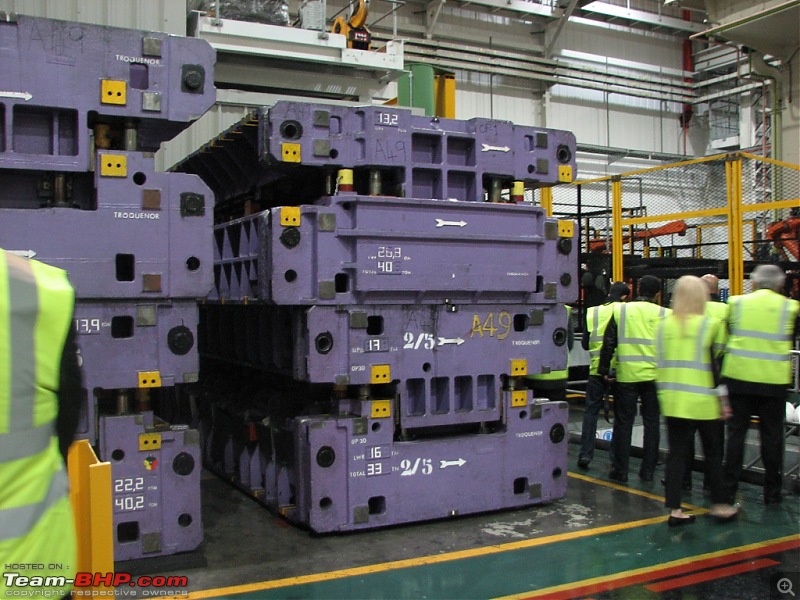
The one replaceable part of the die. See that vertical grooved spacer in the picture below? This part wears off after use. The rest of the die is practically bullet proof:

Talking of bullet proof, the atmospheric pressure inside the factory is kept higher than the pressure outside. This is to ensure that when factory doors open, the high pressure air from inside the factory goes out, and no air from outside comes in. The big pipes running on the roof line pump in high pressure air:

As we move across the factory, we are told that the technological investment & modernization done by Ford is paying off. We could also tell that the folks at Jaguar are really happy with the TATA management. The sentiment goes like "
Jaguar was a small fish in a big pond with Ford. With TATA, we are big fish in a big pond". It is also evident that TATA has given JLR a relatively free hand, without many significant changes. This has really gone down well with the JLR team.



 (20)
Thanks
(20)
Thanks

 (10)
Thanks
(10)
Thanks

 (9)
Thanks
(9)
Thanks

 (19)
Thanks
(19)
Thanks

 (9)
Thanks
(9)
Thanks

 (10)
Thanks
(10)
Thanks

 (10)
Thanks
(10)
Thanks

 (12)
Thanks
(12)
Thanks

 (10)
Thanks
(10)
Thanks

 (8)
Thanks
(8)
Thanks

 (9)
Thanks
(9)
Thanks

 (8)
Thanks
(8)
Thanks

 (10)
Thanks
(10)
Thanks

 (9)
Thanks
(9)
Thanks

 (26)
Thanks
(26)
Thanks







